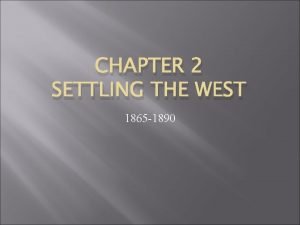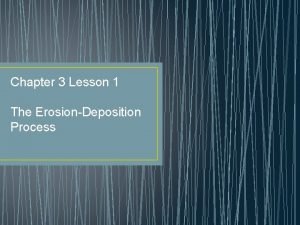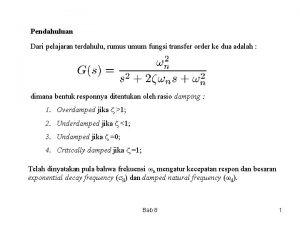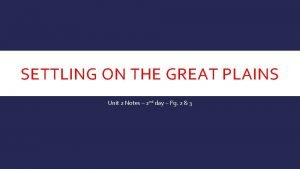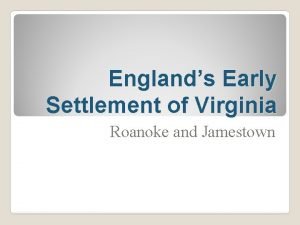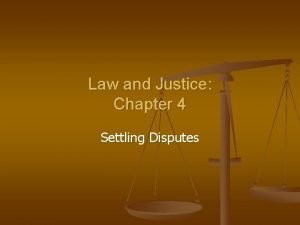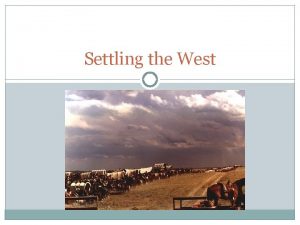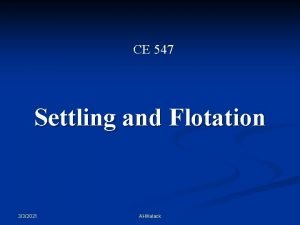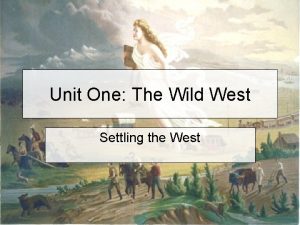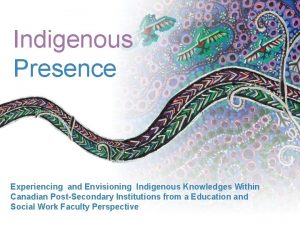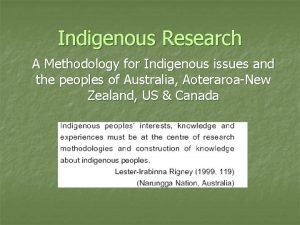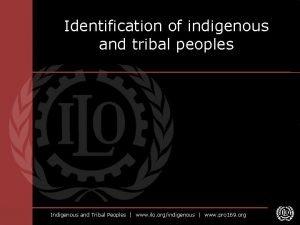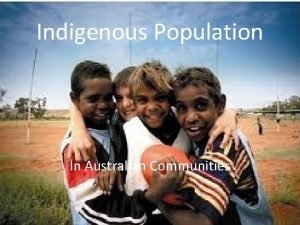SETTLING THE WEST Indigenous Populations in the West
























- Slides: 24

SETTLING THE WEST


Indigenous Populations in the West • Very little is known about the indigenous peoples in the West before the arrival of Europeans • Early aboriginal peoples hunted to survive (Bison, caribou, horse, camel, etc. ) • People of the Plains moved between resource zones according to the seasons – Weather was “predictably unpredictable” – Evidence that during the hypsithermal interval (Medieval Warm Period), the bison all but disappeared from the Canadian prairies for almost 500 years. • Roughly 50, 000 people were living on the Canadian prairies in 1640


• https: //native-land. ca/

Fur Trade • Significant changes with the arrival of Europeans • Hunting bands moved into new territories and negotiated new diplomatic arrangements with neighboring groups • Introduction of infectious diseases like smallpox • Indigenous autonomy was reduced in the 19 th century through population pressure from Eastern North America, the expansion of the Canadian nation-state, the destruction of the single, crucial element in the plains economy: bison.


Fur trade and change • The Hudson’s Bay Company (HBC) traded from posts on Hudson’s Bay and then was later forced to create forts inland due to competition. • The French, and later the Northwest Company (NWC), created extensive networks in the Canadian interior. • Eventually the HBC and NWC were forced to merge in 1821.



Red River • One of the first Western colonies on the Canadian prairies was Red River. • By 1840, it was primarily populated by metis. • Canada was given sovereignty over Rupert’s Land in 1869, but it was forced to renegotiate terms with the settlers of Red River after the Red River Resistance led by Louis Riel. • This led to the creation of the province of Manitoba in 1871.


Settling the West • Due to the federal government’s great powers, decisions about the West were made in Ottawa. The priorities of the federal government at this time were: – Surveying the land – Dispatching the NWMP – Homesteading and farming – Large scale immigration

The survey system divided the arable prairie lands into square townships, each comprising 36 sections of 640 acres, with the homestead comprising one 160 acre quarter section.



The West As British • The future of the Canadian West would be decided British. This was evidenced by: – The Indian Act, 1874 – The failure of the Northwest Rebellion in 1885 – The Passage of the Manitoba Schools Act (Public Schools Act) • Saskatchewan and Alberta were created in 1905, carrying on the British tradition of peaceful evolution from colony to self-governing state.


treaties • Seven indigenous treaties were negotiated in the 1870 s between the Canadian Government and the First Nations of the Western interior. • These treaties exchanged indigenous sovereignty over the land for government promises of economic assistance, education, and the creation of reserves.


Settling the Prairies • Westerners became troubled by the arrival of hundreds of thousands of non-British immigrants. • Scandinavians and Germans tended to assimilate quickly. Other groups (Mennonites, Jews, Ukrainians, etc. ) sought to retain more of their cultural heritage. • Some religious groups (Mennonites, Doukhobors, etc. ) choose to leave rather than accept the norms being established. • By the 1950 s, the Prairies were far closer to a British Canadian model than any other culture in Canada.



• “No Surrender is a detailed account of treaty negotiations and of the differing understandings of the treaty-making process, as seen through an unbiased lens. Indigenous people didn’t lack knowledge and were not ignorant savages — as they’ve been portrayed by some historians. Indigenous people understood sovereignty over territory, even though land ownership in the European sense was unknown. They wanted to use the treaties to build a better life for future generations, while the government wanted the land saw no intrinsic value in the Indigenous nations that had ruled the land for centuries. That was a tragic flaw that continues to haunt Canada and the First Nations. ” - Doug Cuthand
 Soddie
Soddie Settling the west part 2 packet- farming the plains
Settling the west part 2 packet- farming the plains Calculating overshoot
Calculating overshoot Examples of flotation and settling
Examples of flotation and settling An ideal horizontal flow settling basin
An ideal horizontal flow settling basin Damping ratio in control system
Damping ratio in control system Settling velocity stokes law
Settling velocity stokes law What is late charge in front office
What is late charge in front office Gravitational settling chamber
Gravitational settling chamber What is the laying down or settling of eroded material?
What is the laying down or settling of eroded material? Rumus rise time
Rumus rise time Settling on the great plains section 2
Settling on the great plains section 2 Input system output
Input system output Hindered settling
Hindered settling Settling jamestown
Settling jamestown Types of settling
Types of settling Gravitational settling chamber
Gravitational settling chamber Separating mechanical mixtures
Separating mechanical mixtures Gravitational settling chamber
Gravitational settling chamber Define terminal settling velocity
Define terminal settling velocity Differential settling method
Differential settling method Settling velocity
Settling velocity Primary detention
Primary detention Chapter 4 settling disputes
Chapter 4 settling disputes Where can we find rotating arm sprays in sewage treatment?
Where can we find rotating arm sprays in sewage treatment?
